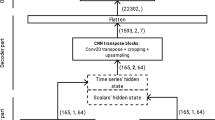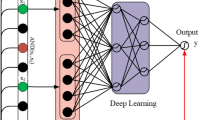Abstract
In Assicurazioni Generali, an automatic decision-making model is used to check real-time multivariate time series and alert if a car crash happened. In such a way, a Generali operator can call the customer to provide first assistance. The high sensitivity of the model used, combined with the fact that the model is not interpretable, might cause the operator to call customers even though a car crash did not happen but only due to a harsh deviation or the fact that the road is bumpy. Our goal is to tackle the problem of interpretability for car crash prediction and propose an eXplainable Artificial Intelligence (XAI) workflow that allows gaining insights regarding the logic behind the deep learning predictive model adopted by Generali. We reach our goal by building an interpretable alternative to the current obscure model that also reduces the training data usage and the prediction time.
Access this chapter
Tax calculation will be finalised at checkout
Purchases are for personal use only
Similar content being viewed by others
Notes
- 1.
Details can not be disclosed due to company policies.
- 2.
The subsequence extraction is performed using the default implementation parameters for MR-SEQL and the heuristic proposed in [2] for LTS.
- 3.
All the models are trained using the default library implementation parameters: Scikit-learn for dt, rf, XGBoost for xgb, LightGBM for lgb, CatBoost for cat.
References
Ba, Y., et al.: Crash prediction with behavioral and physiological features for advanced vehicle collision avoidance system. TR_C 74, 22–33 (2017)
Grabocka, J., et al.: Learning time-series shapelets. In: KDD. ACM (2014)
Guidotti, R., et al.: A survey of methods for explaining black box models. ACM Comput. Surv. 51(5), 1–42 (2019)
Guidotti, R., et al.: Crash prediction and risk assessment with individual mobility networks. In: MDM. IEEE (2020)
Kweon, Y.J., et al.: Development of crash prediction models with individual vehicular data. TR_C 19(6), 1353–1363 (2011)
LeCun, Y., et al.: Gradient-based learning applied to document recognition. Proc. IEEE 86(11), 2278–2324 (1998)
Lin, J., et al.: Experiencing SAX: a novel symbolic representation of time series. Data Min. Knowl. Discov. 15, 107–144 (2007)
Lines, J., et al.: A shapelet transform for time series classification. In: KDD, KDD 2012, pp. 289–297. ACM, New York (2012)
Lord, D., et al.: The statistical analysis of crash-frequency data: a review and assessment of methodological alternatives. TR_A 44(5), 291–305 (2010)
Lundberg, S.M., et al.: A unified approach to interpreting model predictions. In: NIPS, pp. 4768–4777 (2017)
Lundberg, S.M., et al.: From local explanations to global understanding with explainable AI for trees. Nat. Mach. Intell. 2(1), 56–67 (2020)
Mannering, F.L., et al.: Analytic methods in accident research: methodological frontier and future directions. Anal. Methods Accid. Res. 1, 1–22 (2014)
Nanni, M., et al.: City indicators for geographical transfer learning: an application to crash prediction. GeoInformatica 1–32 (2022)
Nguyen, T.L., et al.: Interpretable time series classification using linear models and multi-resolution symbolic representations. DAMI 33(4), 1183–1222 (2019)
Salim, F.D., et al.: Collision pattern modeling and real-time collision detection at road intersections. In: ITSC, pp. 161–166. IEEE (2007)
Selvaraju, R.R., et al.: Grad-CAM: visual explanations from deep networks via gradient-based localization. In: ICCV, pp. 618–626 (2017)
Sundararajan, M., et al.: Axiomatic attribution for deep networks. In: ICML. Proceedings of Machine Learning Research, vol. 70, pp. 3319–3328. PMLR (2017)
Tan, P.N.: Introduction to Data Mining. Pearson Education India (2018)
Wang, J., et al.: Real-time driving danger level prediction (2010)
Wang, Y., et al.: ML methods for driving risk. In: EM-GIS. ACM (2017)
Ye, L., et al.: Time series shapelets: a new primitive for data mining (2009)
Zantalis, F., et al.: A review of machine learning and IoT in smart transportation. Future Internet 11(4), 94 (2019)
Ziebinski, A., et al.: Review of advanced driver assistance systems (ADAS) (2017)
Acknowledgment
This work has been partially supported by the European Community Horizon 2020 programme under the funding schemes: G.A. 871042 SoBigData++, G.A. 952026 HumanE AI Net, and G.A. 834756 XAI.
Author information
Authors and Affiliations
Corresponding author
Editor information
Editors and Affiliations
Rights and permissions
Copyright information
© 2022 The Author(s), under exclusive license to Springer Nature Switzerland AG
About this paper
Cite this paper
Spinnato, F., Guidotti, R., Nanni, M., Maccagnola, D., Paciello, G., Farina, A.B. (2022). Explaining Crash Predictions on Multivariate Time Series Data. In: Pascal, P., Ienco, D. (eds) Discovery Science. DS 2022. Lecture Notes in Computer Science(), vol 13601. Springer, Cham. https://doi.org/10.1007/978-3-031-18840-4_39
Download citation
DOI: https://doi.org/10.1007/978-3-031-18840-4_39
Published:
Publisher Name: Springer, Cham
Print ISBN: 978-3-031-18839-8
Online ISBN: 978-3-031-18840-4
eBook Packages: Computer ScienceComputer Science (R0)




